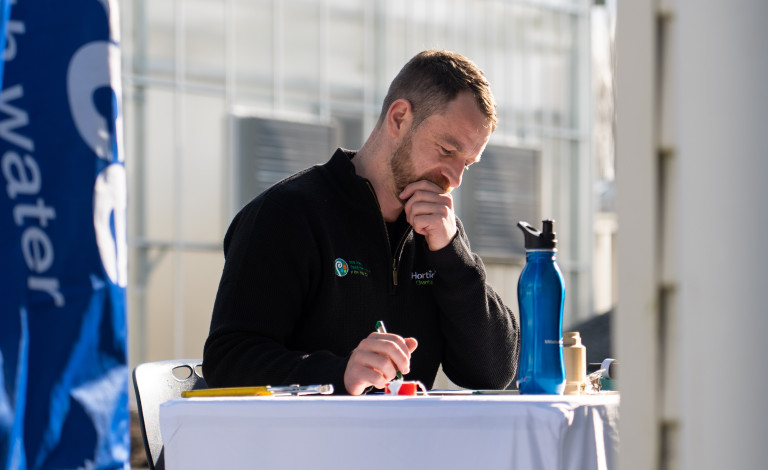Major growth opportunity for master's student
14 April 2021 | Students News
Lincoln University master’s student Harri Wulff wants to help the New Zealand agricultural industry to harness the significant potential of hemp.
International demand is increasing for hemp’s nutritious seeds and high quality fibres, which can be used to create a wide variety of products, from food items to clothing and textiles.
But little New Zealand research has been carried out on the plant in terms of fibre production, and the industry is in its early stages.
Harri says a thriving hemp production sector could add even more weight to the country’s world-leading reputation in agriculture, and his project is among the first in the world to study certain aspects of the plant.
He’s carrying out the research as part of his Master of Agricultural Science degree, and is looking at how to produce the best possible quality and yield of the crop.
“New Zealand is a great place to grow hemp, but we just need to know how to grow it correctly. There hasn’t been much research on the plant’s development yet,” Harri says.
He has spent the past year growing hemp crops at Carrfields, an Ashburton organisation that is funding the research.
Carrfields is also working on blending hemp fibres with other natural fibres, to produce high quality materials with a distinctly New Zealand story, so they were interested in working with a Lincoln master’s student on hemp research.
“It’s an incredible opportunity to grow a crop like this on such a large scale at master’s level,” Harri says.
“Hemp has so many applications and if we get our research right, we will be able to produce fibres of top tier quality.
“The fibre is very strong and durable, and makes for breathable clothing. It can also be used to create carpet, due to its antibacterial nature, or textiles for private jets and luxury items.”
Additionally, Harri says the plant produces a woody core that can act as a pine substitute.
“It grows four times faster than pine and can also be used for paper, construction, animal bedding and much more.”
The master’s research project includes three targets: assessing growth parameters, quantifying development, and investigating fibre quality.
“These objectives are relatively fundamental, which is important, because we need to get the fundamentals right to create a solid foundation on which to build future research and recommendations,” he says.
“First of all, we want to find out how quickly the plant grows, which has been researched before but not in New Zealand. More research in specific conditions is needed as well.
“We’re also looking at how long each growth stage takes, and assessing fibre quality by observing both the primary and secondary fibres. Only three or four research papers in the world have focused on this.
“Primary fibres grow with the plant, but the secondary ones develop later on and help to strengthen the plant’s structure.
“We’re working out how long you can leave the plant until you have to cut it, in order to get both high yield and high quality,” Harri says.
“Internationally, there’s no solid way of detecting that without this research.”
He now has a few more weeks’ worth of samples to process, then will be writing up his findings, with the aim of finishing in September.
Before embarking on his master’s degree, Harri completed a Bachelor of Agriculture at Lincoln.
“I always wanted to work in the agricultural sector and Lincoln is held in high regard,” he says. “When talking to farmers and industry people, people know the uni and I like and respect the kind of work that comes out of it.”


